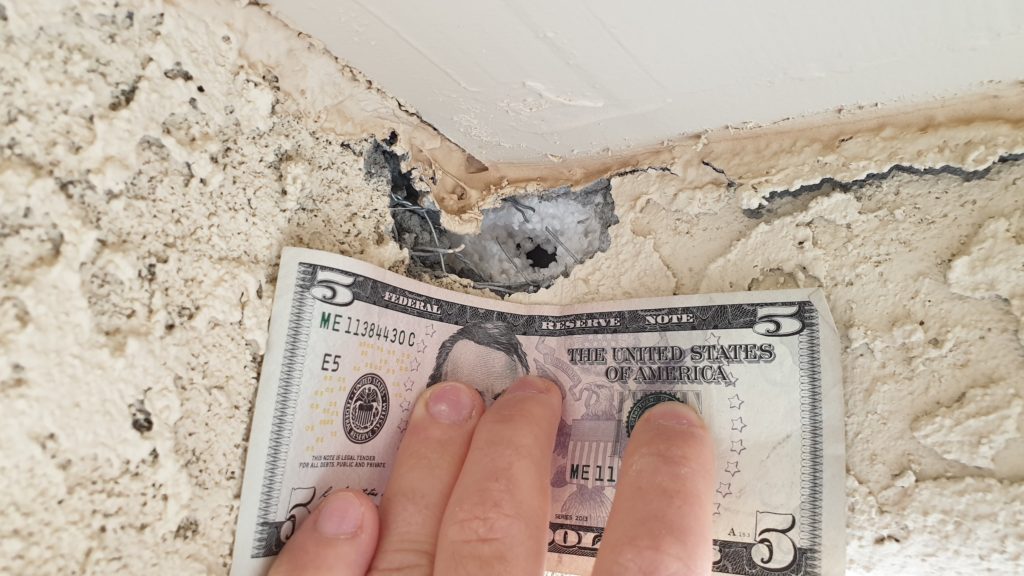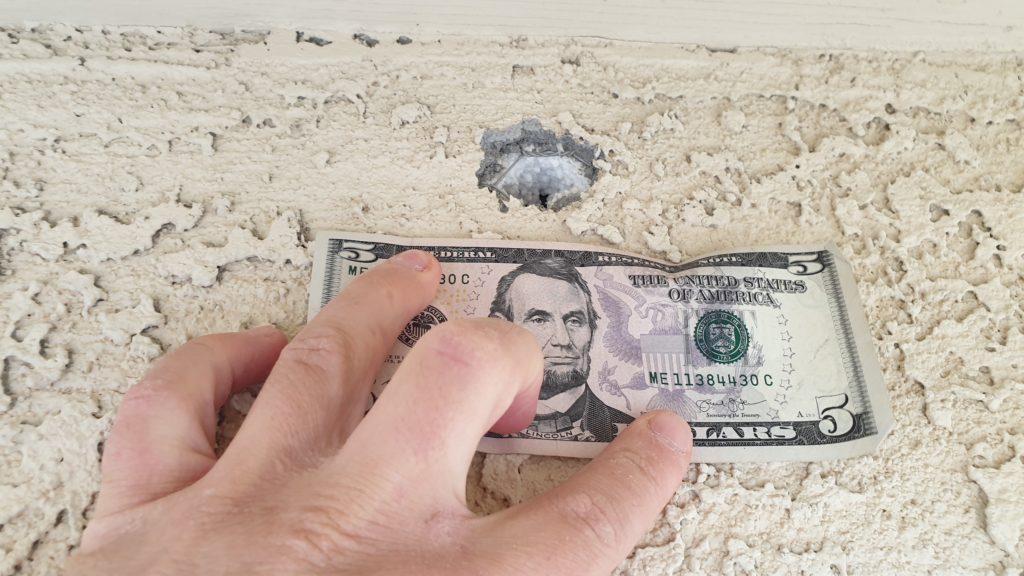This fall, our neighborhood has been dealing with an invasion of woodpeckers. While you would think they would stick to pecking on wood, they have been doing incredible amounts of damage to the stucco homes in our neighborhood, including my house. Who knew woodpeckers could peck through stucco so easily?
In Arizona, animals that are classified as pests, such as the ground squirrels, can be legally controlled if they are causing damage to your property, as long as you do so in a humane manner. I want to emphasize that if a pest is not causing any damage, I either leave it alone or shoo it away using non-harmful scare tactics. The second the pest starts causing damage, though, all bets are off. I will use any and all legal means at my disposal to protect my property.
I live in a rural area outside of city limits, so my trusty air rifle is my go-to method of ground squirrel control. In instances where discharging the air rifle is either unsafe or impractical, I use rat traps. Last summer, a large family of ground squirrels burrowed underneath my air conditioner. The rat traps worked wonders.
A Problem with Woodpecker Control
Unlike pests such as ground squirrels, woodpeckers are highly protected under federal law. Controlling them by lethal means is out of the question. If you’re caught killing a woodpecker, you will face up to a $100,000 fine and will be thrown in jail. Don’t even think about doing it. To add insult to injury, woodpeckers are fiercely territorial. Once they set up shop, it is next to impossible to get them to leave.
With the more “traditional” means of pest control not being an option, my best option was behavioral control through scare tactics. In other words, you want to scare them away before they cause any damage. I started by hanging the bird flash tape. As expected, the woodpeckers just went and pecked where there was no bird tape. Covering the entire house with bird tape is not exactly practical, so it was on to Plan B. I got a couple of those plastic owls to scare them away.

I did not realize that woodpeckers are as smart as they are. If you don’t move the owls every day or two, the woodpeckers will figure out that the owls are fake. The day I went outside to find a woodpecker pecking on one of my fake owls was when I knew this battle was escalating beyond traditional means. It was time to think outside of the box.
The Next Bad Idea for Keeping Woodpeckers Away from the House
My next thought was to use noise to scare them away. Woodpeckers drum on things and make loud noises to establish their territory and attract mates. The loudest bird gets the territory/mate. Hopefully all I have to do is to make a louder noise than them and they’ll leave. If you’re not rolling your eyes at that statement, you should be. Enter the air horn.
Now, picture this. To effectively use the air horn, I had to creep around the sides of the house, just like they do in those shooter movies, blindly reach around the corner of the house and sound the air horn. Once the woodpeckers took off, I would sprint after them blowing the horn at them until they left the property. If you’re thinking I look like a fool here, well, you’d be right. Unfortunately, the woodpeckers quickly realized the horn was harmless. To add insult to injury, they had already damaged the house before I could shoo them away.
Back to the Drawing Board
I knew now that I had to reach deep into my bag of tricks and go beyond “outside-the-box” thinking. It was time to go MacGyver on them, so I sat down and made a list of requirements for a system to keep woodpeckers off the house.
- Much faster response time in order to shoo them away before they damage the house. The deterrent system must activate pretty much instantly once they land on the house.
- The woodpeckers must know there is actually a credible threat behind the scare tactics without harming the birds. They’ve figured out that everything I’ve done so far is just a hollow threat and there are no consequences for them.
- The system must be able to protect the entire house.
- I must be able to manually activate the deterrent system from inside the house, without having to open any windows or doors.
Enter a Crazy, but Ingenious Idea
Once that list was done, it was time to see if my various prongs of knowledge, experience, and logic could all come together to meet the requirements of the system. Once I started brainstorming, it took a bit of a superfluous route, but here’s where it eventually landed:
- If you’ve ever trained a pet before, you know that spraying them with water works very well to tell them when they do something wrong. This trick works especially well with cats. Birds generally don’t like to be wet because it can adversely affect their ability to fly. Spraying the woodpeckers with water would check off number 2 (the credible threat requirement) on the list above.
- Remember all of the years I spent studying meteorology and physics. I can use my knowledge of fluid dynamics to run the calculations to ensure that a spray system will both a) actually work, and b) protect the entire house.
- I installed a smart home system in my house last spring. The smart home system will allow me to use smart switches and/or valves to both automatically and manually activate the system from anywhere. A motion sensor under the eaves hopefully can detect when woodpeckers land there. They will instantly send a signal to the smart home controller to activate the anti-woodpecker spray system, eliminating the gap in response time.
Now that I have an idea to work with, it’s time to jump into the mathematics and fluid dynamics to ensure this will actually work before I start running out to buy parts for it. Stay tuned.


